
Brakes
When the GT6 was developed from the original Triumph Spitfire the front disc brakes were uprated to take the extra power and weight, from Girling Type 14 to Type 16 with larger discs, and the rear drums from 7" to 8" diameter.
1. FRONT BRAKES
Disc brakes were first patented by Lanchester in 1902. However it was Dunlop (with the help of Jaguar 1950s racing cars) who can properly be credited with the design and development of the first viable disc braking system for road and racing cars. In the 1960s Girling acquired the brake interests of Dunlop. Later, Girling became part of Lucas Industries. Girling are still in business, sadly they no longer make stuff for our Triumphs. There were three types of Type 16 brake calipers, see the table below:
| DISC CALIPERS | ||||||
| Girling Type | Part Number | Model | Pots | Bleed Nipple | Bolt Dia. | Piston Dust Seal |
| 16P | 510792 | GT6 Mk 1 | 2 | 3/8" UNF | 7/16" Diameter UNF thread x 1"3/8 Long | Type A (1.5mm Groove) |
| 16PB | 157685 | GT6 Mk 2 GT6 Mk 3 (to 1972) |
2 | 3/8" UNF | 7/16" Diameter UNF thread x 1"3/8 Long | Type B (3.4mm Groove) |
| 16PB (Metric) | 158713 | GR6 Mk 3 (1972 on) |
2 | M10 | M12 x 35mm Long | Type B (3.4mm Groove) |
Early GT6s were fitted with type 16P, later Mk2 and early Mk3 with type 16PB and later Mk3s (from 1972) with type M16PB (metric) calipers. The caliper casting is identical other than the "PB" cast onto the back. However, although all the caliper pistons were 54mm dia. x 29mm, the groove width of the pistons fitted to the later 16PB is 3.4mm instead of 1.5mm, to accomodate a different dust seal. The 16P has the dust seal lower edge secured by the piston in a very thin groove in the bore of the caliper, very near the outside. The 16PB, with the wider piston groove, has the dust boot retained by a split steel ring that clamps the boot into a groove in the casting that is proud of the bore.

From 1972 onwards the GT6 Mk3 was fitted with type Metric type PB calipers; these were identical to the non-metric PB calipers except that the mounting bolts were 12mm instead of 7/16" UNF.
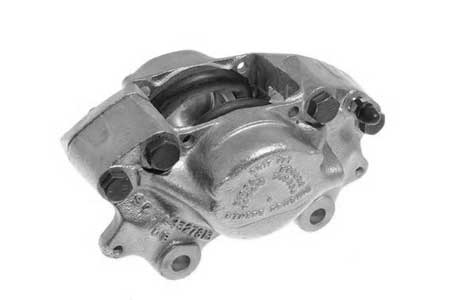
The GT6 discs (below) are 9.7" in diameter or 246.4mm. (Spitfire discs are 9.1" or 232mm).
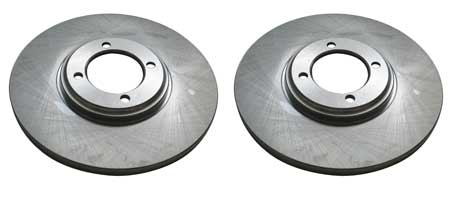
2. REAR BRAKES
The rear brakes for GT6s Mk1, Mk2 and Rotoflex Mk3 are drums, 8" x 1¼" wide (203mm x 31.75mm) leading and trailing shoe. Non-Rotoflex Mk3s have slightly different rear brakes in that they are not adjustable and the drums are 8" x 1½" (203mm x 38mm). However self-adjusting brakes can cause problems, because as the brake wears and the self adjuster takes up the slack, the brakes wear a groove in the drum which is then difficult to remove, and there is no adjuster to slacken off!
Drum brakes were first patented by Louis Renault in 1902. He used asbestos for the linings, as it was very good at dissipating heat. The use of asbestos was prohibited from 1999 in the UK, with the exception that pre 1973 vehicles which could continue to be fitted with asbestos containing brake shoes until 2004.
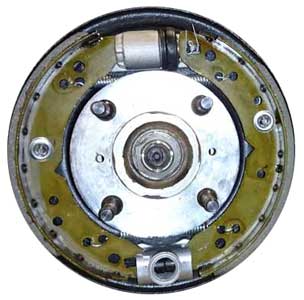
In the picture above (from a Mk2 GT6) can be seen the brake cylinder at the top and the adjuster at the bottom.
3. MASTER CYLINDER
The GT6 was fitted with a larger master cylinder than the Spitfire, the bore size was 0.75" or 19mm diameter (the Spitfire was 0.50" or 13mm). Originally made by Girling, the reservoir was also bigger, see below left. Later Mk3 GT6s with the dual braking system had a different master cylinder with the same 0.75" bore, see below right.

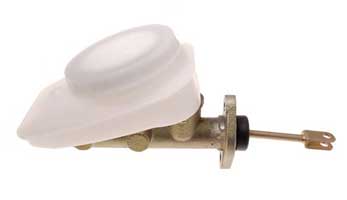
4. BRAKE PIPES
The brake pipes are single line in the Mk1, Mk2 and early Mk3 GT6. Later GT6 Mk3s had a tandem (dual line) system. The image below shows the single system fitted to earlier GT6s. Pipes are in green, connectors in gold.

Brake pipes were originally made from 3/16" steel tubing which was a strong material which unfortunately has a propensity to rust. Restored GT6s tend to be fitted with 3/16" Copper or Cupro-Nickel tubing which are resistant to corrosion, see the table below of the mechanical properties of the various tubing materials. Various brake pipe kits are available (from, for example, Automec). In my experience it is preferable to make ones own, then they can be made exactly to the length one wants, and if a mistake is made, it is easy to make another! A good pipe flaring tool is made by Franklin, others are available!
| Mechanical Properties of Materials Used for Hydraulic Brake Tubes | |||||
| Material | Ultimate Tensile Strength psi x 103 |
Yield Strength or 0.5% Proof Stress psi x 103 |
Elongation % on 2 in. |
Fatigue Strength (107 cycles) psi x 103 |
Burst Pressure * psi x 103 |
| Steel | 48 - 55 | 28 - 34 | 30 - 40 | 30 | 19.5 |
| Copper | 32 - 38 | 10 - 14 | 45 - 60 | 10 | 12 |
| 90/10 Copper-Nickel | 48 - 54 | 16 - 22 | 40 - 55 | 15 | 19 |
| * Burst pressure for typical 3/16" tubing, 0.187in (4.7 mm) o.d. and 0.028in (0.7 mm) wall thickness. | |||||
Similarly the original rubber flexible hoses (not coloured in the above) can be replaced with stronger steel reinforced ones (examples of both can be seen below).
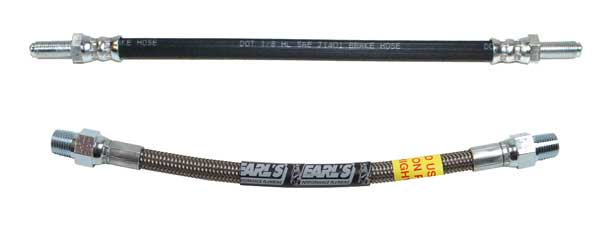
5. BRAKE SERVO
The GT6 Mk1 and Mk2 are not fitted with a brake servo. Late Mk3 GT6s (from January 1973, KE20001) are fitted with a Girling Powerstop Mk2 vacuum operated brake servo, as below left. New replacements are now unobtainable, although service kits, and expensively rebuilt ones are!
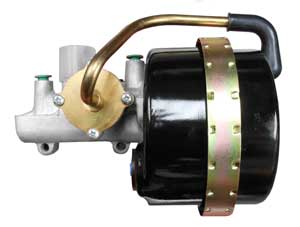
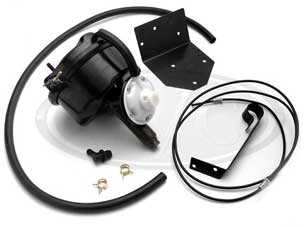
A similar Lockheed version can be used as an aftermarket replacement (I have fitted one to my Mk2), usually as a kit (see top right) from around £100.
6. HANDBRAKE
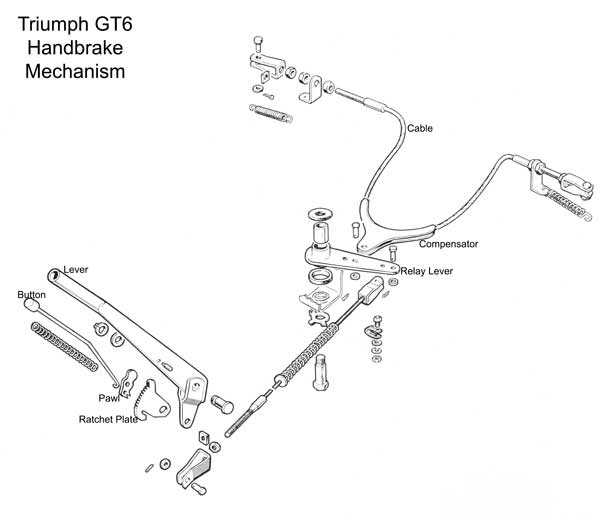
According to Haynes "A hand brake, also known as a parking brake, usually takes the form of a hand-operated lever and is normally located between the driver’s and passenger's seats. The handbrake applies the rear brake shoes via a cable and is used when the car is parked to stop it rolling forwards or backwards. To apply it, you hold the hand grip, press the button (usually at the end of the grip) and raise the lever. As you raise it you’ll feel resistance as the brakes are applied. When you feel the brakes are exerting sufficient force to hold the car you release the button and a pawl engages on a ratchet plate, holding the lever (and the brakes) in place. To release the brakes you raise the lever slightly to disengage the pawl tooth from the ratchet, press the button and lower the lever".
![]()